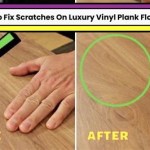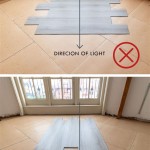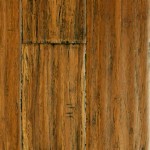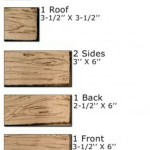How To Remove Sticky Residue From Luxury Vinyl Plank Flooring
Luxury Vinyl Plank (LVP) flooring has gained significant popularity due to its durability, water resistance, and aesthetic appeal. However, like any flooring material, LVP is susceptible to accumulating sticky residue. This residue can originate from various sources, including adhesives, spills, tape, or even general foot traffic combined with environmental factors. Addressing sticky residue promptly and effectively is crucial for maintaining the appearance and longevity of LVP flooring. Understanding the nature of the residue and employing appropriate cleaning techniques are key to achieving a successful outcome without damaging the floor.
Identifying the type of sticky residue present is the first step in selecting the correct cleaning method. Different types of residues respond differently to various cleaning agents. For instance, adhesive residue from tape may require a solvent-based cleaner, while sugary spills may be effectively removed with warm water and mild detergent. A careful assessment will prevent the use of harsh chemicals that could potentially harm the LVP's surface. It is always advisable to test any cleaning solution in an inconspicuous area before applying it to the entire affected area.
Before embarking on the cleaning process, gather the necessary supplies. These typically include soft cloths, a microfiber mop, warm water, mild dish soap, a plastic scraper or putty knife, rubbing alcohol, vinegar, and potentially a commercial adhesive remover specifically designed for vinyl flooring. Avoid using abrasive scrub brushes or steel wool, as these can scratch and damage the LVP's protective layer. Ensuring a well-ventilated environment is also essential, especially when using solvent-based cleaners.
1. Mild Cleaning Solutions: Initial Approach
The first approach to removing sticky residue should always involve the gentlest methods. Start with warm water and a mild dish soap. Mix a small amount of dish soap with warm water in a bucket. Dip a soft cloth into the solution, wring it out thoroughly, and gently wipe the affected area. Avoid saturating the flooring with water, as excessive moisture can seep into the seams and potentially damage the subfloor over time.
After wiping the area with the soapy water solution, rinse the cloth with clean water and wipe the area again to remove any soap residue. Dry the area thoroughly with a clean, dry cloth. This simple method is often effective for removing fresh spills and light sticky residues. If the residue persists, move on to the next level of cleaning solutions.
Another mild cleaning solution involves using white vinegar. Vinegar is a natural cleaning agent with mild acidity that can help dissolve sticky residues without damaging most surfaces. Mix equal parts white vinegar and warm water in a spray bottle. Spray the solution onto the affected area and let it sit for a few minutes to allow the vinegar to penetrate the residue.
After a few minutes, wipe the area with a soft cloth. Similar to the dish soap method, rinse the cloth with clean water and wipe the area again to remove any vinegar residue. Dry the area thoroughly with a clean, dry cloth. Vinegar is particularly effective for removing hard water stains and some types of adhesive residue. However, it should be used with caution on certain types of LVP flooring, as prolonged exposure to acidic solutions can potentially dull the finish. Spot testing is crucial.
2. Using Rubbing Alcohol for Stubborn Residue
For sticky residues that do not respond to mild soap and water or vinegar solutions, rubbing alcohol can be an effective alternative. Rubbing alcohol is a solvent that can dissolve various types of adhesives and sticky substances. However, it is important to use it sparingly and with caution, as excessive use can potentially damage the LVP flooring's surface.
Before applying rubbing alcohol to the affected area, test it in an inconspicuous spot to ensure it does not discolor or damage the flooring. If the test is successful, dampen a soft cloth with rubbing alcohol and gently wipe the sticky residue. Avoid pouring rubbing alcohol directly onto the flooring. Allow the alcohol to sit on the residue for a few seconds to dissolve it.
After wiping the area with the alcohol-dampened cloth, use a clean, dry cloth to wipe away any remaining alcohol and residue. It is important to ensure that the area is completely dry after cleaning with rubbing alcohol. Rubbing alcohol evaporates quickly, but it is still advisable to wipe the area with a dry cloth to prevent any potential damage to the flooring.
In some cases, a plastic scraper or putty knife may be necessary to gently remove stubborn sticky residue after applying rubbing alcohol. Hold the scraper at a low angle to the floor and gently scrape the residue away. Avoid using excessive force, as this can scratch the LVP flooring's surface. Work slowly and carefully to minimize the risk of damage.
3. Commercial Adhesive Removers: A Last Resort
If mild cleaning solutions and rubbing alcohol fail to remove the sticky residue, a commercial adhesive remover specifically designed for vinyl flooring may be necessary. These products are formulated to dissolve adhesives and sticky substances without damaging the flooring material. However, it is crucial to choose a product that is specifically recommended for use on LVP flooring and to follow the manufacturer's instructions carefully.
Before applying any commercial adhesive remover to the affected area, read the product label and safety precautions. Many adhesive removers contain strong solvents and can emit potentially harmful fumes. Ensure adequate ventilation by opening windows and doors or using a fan. Wear gloves to protect skin from contact with the remover.
Apply the adhesive remover to a clean cloth and gently wipe the sticky residue. Avoid pouring the remover directly onto the flooring. Allow the remover to sit on the residue for the amount of time specified in the product instructions. This allows the solvents to penetrate and dissolve the adhesive.
After the recommended dwell time, use a clean cloth to wipe away the adhesive remover and the dissolved residue. Depending on the product, it may be necessary to rinse the area with clean water after removing the residue. Follow the manufacturer's instructions regarding rinsing and drying procedures.
In some cases, multiple applications of the adhesive remover may be necessary to completely remove the sticky residue. If the residue persists after the first application, repeat the process, allowing the remover to sit on the residue for a longer period of time. However, avoid exceeding the maximum dwell time specified in the product instructions.
After successfully removing the sticky residue with a commercial adhesive remover, it is important to clean the area thoroughly with a mild cleaning solution to remove any remaining traces of the remover. This will help prevent any potential damage to the LVP flooring over time. Use warm water and a mild dish soap to clean the area, and then rinse with clean water and dry thoroughly.
Prevention is key to minimizing the occurrence of sticky residue on LVP flooring. Regular cleaning and maintenance can help prevent spills and other substances from accumulating and hardening into sticky residues. Sweep or vacuum the flooring regularly to remove dirt and debris. Wipe up spills immediately to prevent them from drying and becoming sticky. Use mats and rugs in high-traffic areas to protect the flooring from wear and tear and to prevent the buildup of sticky residues.
When using adhesives or tape on LVP flooring, choose products that are specifically designed for use on vinyl surfaces. These products are less likely to leave behind sticky residues. When removing tape or adhesives, peel them off slowly and carefully to minimize the risk of leaving behind residue. If residue does occur, address it promptly using the appropriate cleaning method.
Proper maintenance and prompt attention to spills and residues can significantly extend the life and maintain the appearance of LVP flooring. By understanding the nature of sticky residues and employing appropriate cleaning techniques, homeowners can effectively remove these residues without damaging their valuable flooring investment. Regularly reviewing the manufacturer's recommendations for cleaning and maintenance is also vital to ensure the longevity and aesthetic appeal of the LVP flooring.

How To Remove Vinyl Glue From The Floor Effective Cleanup Guide Waste Removal Usa

How To Remove Sticky Residue From Vinyl Flooring Countyoffice Org

How To Remove Glued Vinyl Plank Flooring King Of Floors

How To Repair Luxury Vinyl Plank Flooring The Palette Muse

How Do I Remove Wax Or Sticky Residue From Hardwood Floors

How To Repair Luxury Vinyl Plank Flooring The Palette Muse

How To Remove Glue From Vinyl Flooring Get Rid Of Adhesive

How To Remove Glue From Vinyl Flooring Harvey Maria

Removing Glue From Vinyl Plank Flooring Hometalk

How To Remove Glue From Vinyl Flooring Get Rid Of Adhesive
Related Posts








